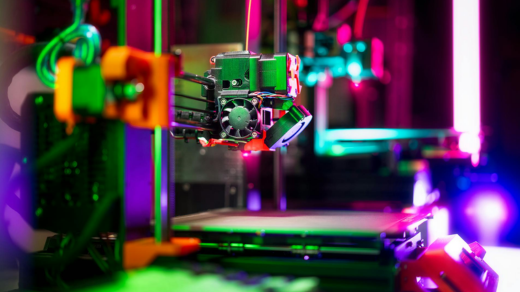The Benefits of Custom 3D Printing for Industrial Projects

In today’s fast-paced industrial world, efficiency, precision, and innovation are key to staying ahead of the competition. One technology that has revolutionized industrial production is custom 3D printing. This advanced manufacturing method enables businesses to create highly specialized, complex, and cost-effective components that traditional manufacturing methods struggle to produce. Whether in aerospace, automotive, healthcare, or any other sector requiring high precision and customization, custom 3D printing is proving to be a game-changer.
1. Unparalleled Design Flexibility
One of the most significant advantages of custom 3D printing is its ability to produce highly complex designs that would be impossible or prohibitively expensive using conventional manufacturing methods. Traditional machining and molding techniques have inherent limitations in terms of geometries, requiring additional processes like assembly or post-machining.
With 3D printing, engineers can create intricate lattice structures, internal channels, or customized features in a single production step. This flexibility allows businesses to innovate freely, pushing the boundaries of what’s possible in product design. Whether it’s an optimized lightweight structure for aerospace applications or an ergonomically designed medical device, the possibilities are virtually endless.
2. Faster Prototyping and Product Development
Time is a crucial factor in industrial production, and custom 3D printing significantly accelerates the product development cycle. Traditional manufacturing often requires expensive tooling, molds, and extensive lead times. Any design modification means restarting a lengthy process, leading to delays and increased costs.
With 3D printing, companies can quickly iterate on designs, testing different prototypes without incurring heavy costs or long wait times. This rapid prototyping capability enables businesses to refine products faster, identify potential flaws early, and get to market sooner. For industries where time-to-market is critical, such as automotive and consumer electronics, this advantage is invaluable.
3. Cost Efficiency and Reduced Material Waste
Cost control is essential in any industrial project, and custom 3D printing offers a highly efficient way to manage expenses. Unlike subtractive manufacturing, where material is removed to create a part, 3D printing is an additive process that builds objects layer by layer. This method significantly reduces material waste, making it a more sustainable and cost-effective solution.
Moreover, traditional manufacturing requires expensive molds and tooling, which can be a major upfront investment, especially for small production runs or specialized parts. With 3D printing, companies can manufacture only what they need, when they need it, without the constraints of minimum order quantities or costly setup fees. This flexibility allows for on-demand production, reducing inventory costs and improving cash flow management.
4. Customization for Unique Industrial Needs
Industrial applications often demand highly specialized components that fit specific requirements. Custom 3D printing allows manufacturers to tailor parts precisely to the needs of a project without the limitations of standardized designs. Whether it’s modifying an existing component to improve its performance or creating entirely new geometries, 3D printing provides unmatched customization capabilities.
This is particularly beneficial in fields like medical technology, where patient-specific implants and prosthetics need to be custom-fitted for optimal functionality. In the aerospace and automotive sectors, engineers can optimize parts for strength-to-weight ratios, ensuring better performance and fuel efficiency.
5. Strength and Material Versatility
Contrary to the misconception that 3D-printed parts lack durability, modern custom 3D printing technologies use a wide range of industrial-grade materials that match or even surpass the strength of traditionally manufactured components. Depending on the application, materials such as high-performance polymers, metal alloys, and composite materials can be used to create parts with exceptional strength, heat resistance, and chemical stability.
For example, industries requiring high-strength and lightweight components, such as aerospace and defense, can benefit from titanium or carbon-fiber-reinforced materials. Meanwhile, high-temperature-resistant polymers are commonly used in industrial applications where extreme conditions are a factor.
6. On-Demand Manufacturing and Supply Chain Optimization
One of the biggest challenges in industrial manufacturing is managing complex supply chains, particularly when dealing with spare parts, replacements, or custom components. Traditional production methods often require large batches to be manufactured and stored, leading to excess inventory and logistical challenges.
With custom 3D printing, businesses can shift towards an on-demand manufacturing model, producing parts only when they are needed. This significantly reduces storage costs, minimizes the risk of obsolete inventory, and enhances supply chain resilience. Companies can also leverage digital warehouses, where part designs are stored and printed as required, reducing the reliance on extensive physical inventories.
7. Sustainable and Eco-Friendly Production
Sustainability is becoming an essential consideration for industries worldwide. As regulations on waste management and carbon emissions tighten, companies are looking for greener manufacturing alternatives. Custom 3D printing aligns with these sustainability goals by reducing material waste, energy consumption, and the need for excessive transportation.
Since additive manufacturing only uses the material necessary for the part, it minimizes scrap and waste. Additionally, local production capabilities mean that businesses can print components closer to their point of use, reducing shipping emissions and logistics costs. This approach not only benefits the environment but also improves overall operational efficiency.
8. The Future of Industrial Production
The evolution of custom 3D printing continues to redefine industrial manufacturing, offering solutions that are more flexible, cost-effective, and efficient. As technology advances, we can expect even more innovations, including higher-speed printing, improved material properties, and integration with AI-driven design optimization.
From small startups to large-scale industrial manufacturers, adopting 3D printing as part of their production strategy can lead to significant competitive advantages. By embracing this technology, companies can streamline operations, enhance product quality, and maintain a sustainable approach to manufacturing.
Conclusion: Why Custom 3D Printing is the Future of Industrial Innovation
The benefits of custom 3D printing for industrial projects are clear: greater design freedom, faster development cycles, cost savings, enhanced material properties, and supply chain optimization. By leveraging this advanced manufacturing technology, businesses can create tailored solutions that meet the highest industry standards while reducing environmental impact and improving efficiency.
Whether you’re in aerospace, automotive, healthcare, or heavy industry, investing in custom 3D printing can help you unlock new possibilities and drive innovation in your projects. To explore cutting-edge 3D printing solutions tailored to your industrial needs, visit AP3D Custom and discover how custom 3D printing can revolutionize your production process.




